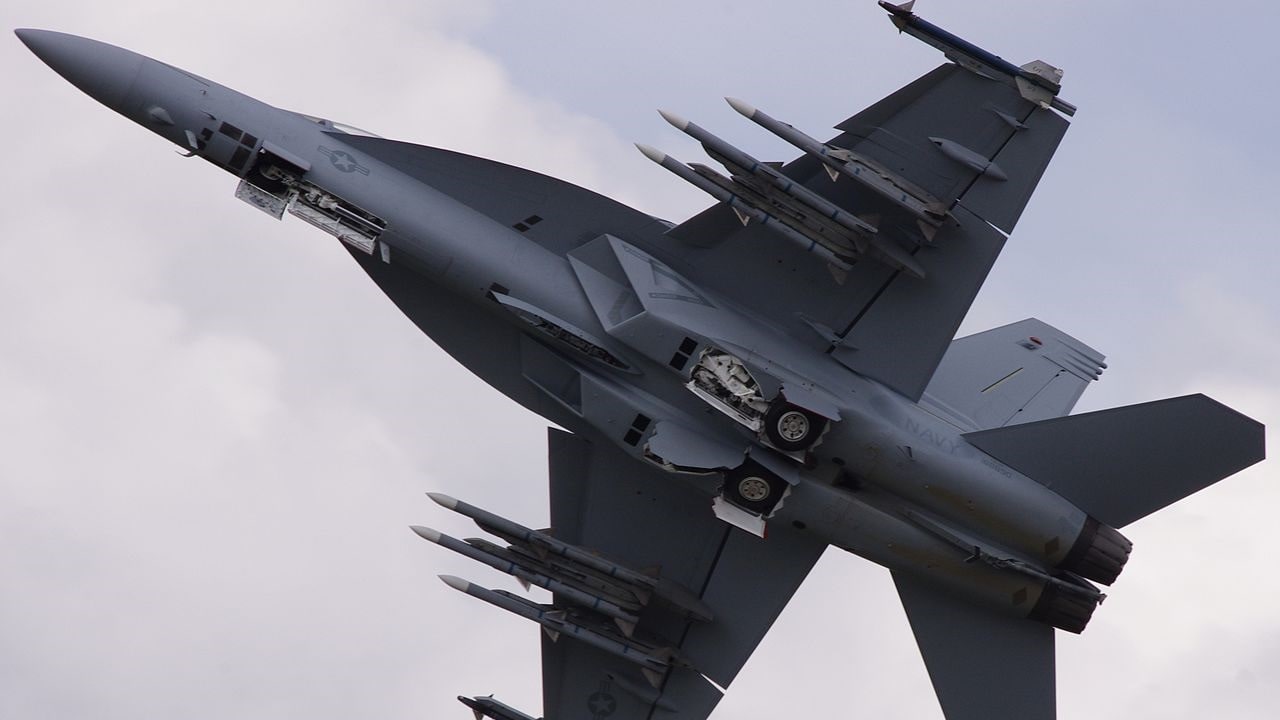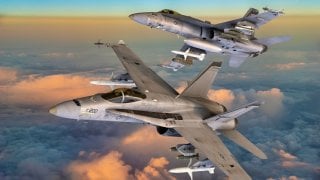Boeing's F-15EX Eagle II and F/A-18E/F Super Hornet to Receive Major Upgrade
The United States Navy first began to acquire the F/A-18E/F Super Hornet in 1999 and the program of record has seen 625 delivered as of the end of 2023. It was earlier this year that the sea service and Boeing finally agreed to the terms for the final batch of seventeen Block III Super Hornets, which will be delivered by 2027.
Aerospace giant Boeing has long touted the advanced capabilities of two aircraft – the F-15EX Eagle II and the F/A-18E/F Super Hornet. Each is a significantly enhanced version of the multirole fighter aircraft developed during the Cold War, but Boeing is now seeking to take the capabilities even further.
It was announced on Tuesday that British Aerospace (BAE) Systems was selected to upgrade the fly-by-wire (FBW) flight control computer (FCC) for both the Eagle II and Super Hornet. This technology refresh is meant to increase the processing power, which will in turn enhance each of the respective aircraft's performance and capabilities.
BAE Systems was the original manufacturer of the FCCs for both aircraft. It also produced the electronic warfare (EW) suite for the F-15EX.
"The FCCs feature common core electronics that support the quad-redundant FBW flight control systems (FCS), providing the safety, reliability, robustness, and performance needed for the missions of these advanced platforms," BAE Systems explained.
"These computers efficiently manage aircraft flight by processing pilot inputs, monitoring real-time aircraft movement conditions via onboard sensors, and transmitting commands to actuators moving control surfaces. The redundant FCS, along with the flight control laws, enables the pilot to maintain controlled operation across the demanding flight regime and multiple loadout configurations," the defense contractor added.
In addition to managing aircraft flight, the FCS can be employed to "reconfigure" an aircraft's controls should there be a failure of a system, or if damage is taken in combat. This is accomplished by "mixing the remaining control surfaces" accordingly. Moreover, the FBW FCS will serve as a de facto co-pilot or autopilot that will allow the pilot in the cockpit to put more focus on mission objectives, while the computer can handle the flight controls.
In addition to the upgraded FCC, the Super Hornet will receive an additional processor, which will future-proof the aircraft in service.
"BAE Systems is a leader in high-integrity controls and this upgrade reflects our commitment to providing our customers with next-generation solutions," said Corin Beck, senior director of Military Aircraft Systems for Controls and Avionics Solutions at BAE Systems. "Our advanced flight-critical solution ensures that these platforms will maintain fleet readiness now, and in the future, as well as provisions the aircraft to support the integration of new functions."

Neither Boeing nor BAE Systems announced a timeframe for when the work would be conducted, or if it will only apply to F-15EX Eagle IIs and F/A-18E/F Super Hornets in the U.S. military's fleet. However, given that the F-15EX is only now being produced, it will likely be easier for those aircraft to receive this update.
The United States Air Force "took delivery of its first operationally configured F-15EX in June," Flight Global reported, while the fighter achieved Initial Operational Capability (IOC) in July. The air service is on track to receive around 90 of the F-15EX, to replace its aging fleet of F-15C/D models. The new fighters are being produced in the same facilities that built the original F-15 Eagle. Israel, Indonesia, and Poland have expressed interest in the Eagle II.
The United States Navy first began to acquire the F/A-18E/F Super Hornet in 1999 and the program of record has seen 625 delivered as of the end of 2023. It was earlier this year that the sea service and Boeing finally agreed to the terms for the final batch of seventeen Block III Super Hornets, which will be delivered by 2027.
As previously reported, the aircraft maker will begin to slow down its build rate of two jets per month to just one and a half, while it pivots its St. Louis Super Hornet workforce towards other Boeing programs – including the F-15EX, T-7A trainer, and MQ-25 refueling.
Author Experience and Expertise: Peter Suciu
Peter Suciu is a Michigan-based writer. He has contributed to more than four dozen magazines, newspapers, and websites with over 3,200 published pieces over a twenty-year career in journalism. He regularly writes about military hardware, firearms history, cybersecurity, politics, and international affairs. Peter is also a Contributing Writer for Forbes and Clearance Jobs. You can follow him on Twitter: @PeterSuciu. You can email the author: [email protected].
Image Credit: Creative Commons and/or Shutterstock.


